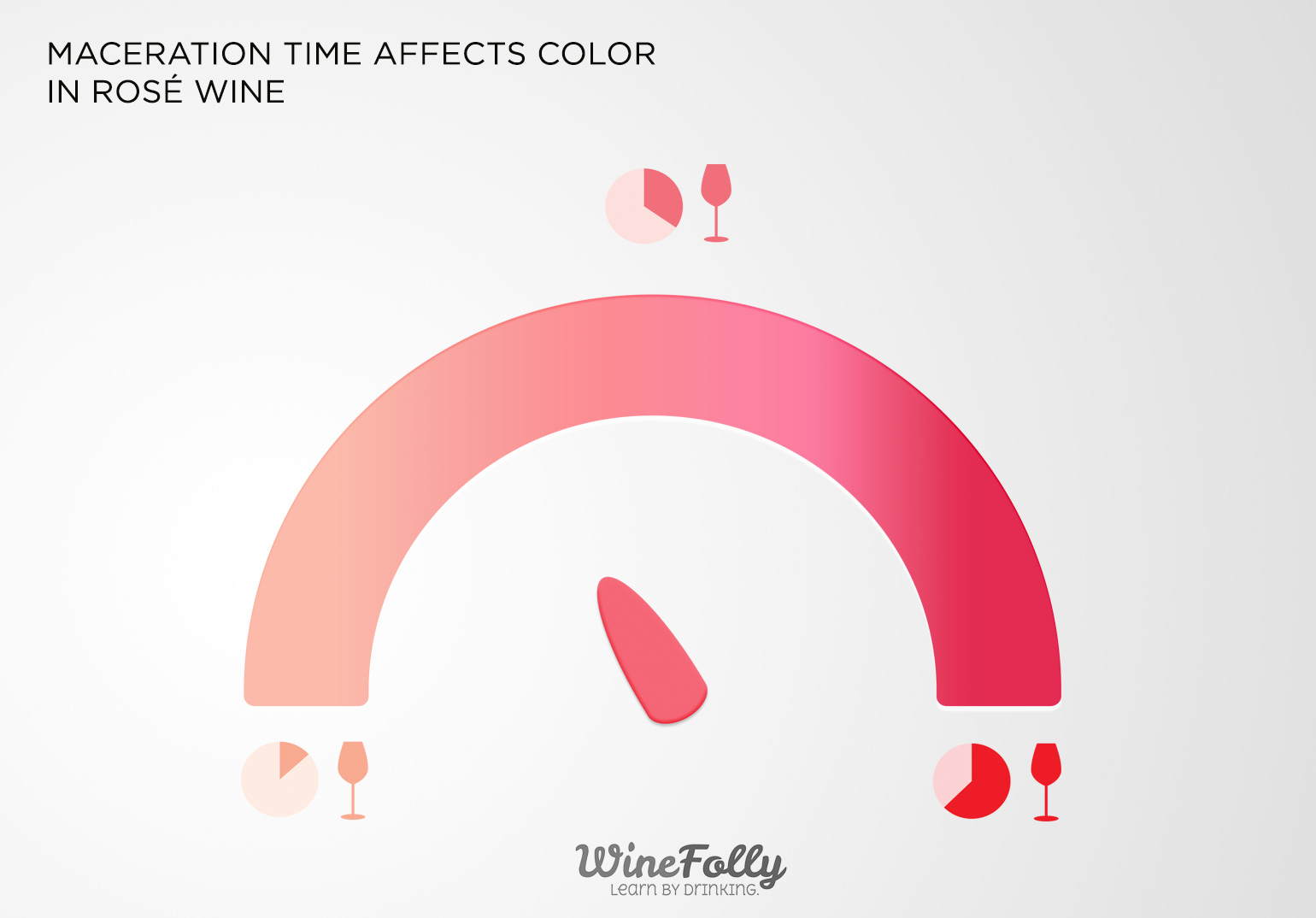The pinker side of life.. by LUKSEMBURK
What is Rosé Wine?
When a wine isn’t quite red, it’s rosé. Technically speaking, this pinkish beverage is produced differently than red wine but with the same grapes. For example, White Zinfandel is produced with the same grapes as Red Zinfandel but the two wines are stunningly different.
Learn all about Rosé wine, from the different styles and grapes to the varied flavors. Rosé wine is serious business –Seriously pink–
Unlikely Origins: Bordeaux
The development of Rosé wine perhaps started with the popularity of Claret (“klar- ETT”)–a common style of red Bordeaux during the 1800’s. Back then, the Brits fawned over pale wines made with Cabernet Sauvignon and Merlot. Nowadays, Bordeaux wines have become bolder and darker to fit today’s red wine flavor profile. Rosé has earned a category of its own.
Common Rosé Wine Descriptions from Light to Dark
- Mint
- Grapefruit*
- Strawberry*
- Tart Cherry
- Red Currant
- Sweet Cherry
- Strawberry Sauce
- Raspberry*
- Wild Strawberry*
- Blood Orange
- Raspberry Sauce
- Tomato
- Red Bell Pepper
- Black Currant
- Blackberry*
- Berry Jam
* Commonl flavors in Rosé Wine
What Varieties Are Used to Make Rosé Wine?
Grenache, Cinsault, Tempranillo, Pinot Noir… nearly every wine grape has been used to make Rosé wine. Since the category has grown in popularity, there are more options than ever to choose from. So where do you begin and what styles are the most popular? Traditional? The best?

Dry Rosé Wine
(aka “Not Sweet”) This style of Rosé wine is the most common style produced today around the world. France and Spain lead the way in Rosé wine production and it’s typical to see a blend of 2-3 different grape varieties. Here are the most common dry Rosé wine varieties used either alone or in a blend:
Traditionally Dry Rosé Wines
- Grenache
- Sangiovese
- Syrah
- Mourvedre
- Carignan
- Cinsault
- Pinot Noir
Sweet Rosé Wine
Any Rosé wine can be produced in a sweet style by simply not fermenting all the sugar into alcohol. However, it is not as common and mostly reserved for bulk wine production. If you are on the search for a sweet rosé wine, the following wines will fit the bill:
Traditionally Sweet Rosé Wines

French Rosé Wine
The epicenter of the Rosé wine world is in the South of France. There, along the Mediterranean, regional varieties like Grenache, Carignan and Syrah are blended together to make refreshingly dry Rosé.
South of France Rosé: What to Look For
The south of France is Provence and Languedoc-Roussillon or sometimes just labeled “Pays d’Oc”. Wines from here smell of strawberries and raspberries and are refreshing with zesty acidity. If you are looking for quality, seek out wines with a high percentage of Grenache, Syrah or Mourvedre versus Carignan or Cinsault. Most Carignan and Cinsault are not as complex.
The Rest of France: What to Look For
Expect to find even drier and zippier Rosé wines from the Loire Valley. Flavors of grapefruit, mint and even red bell pepper are common. In Bordeaux, Rosé made from Merlot can lean towards the sweet side with aromatics of strawberry sauce and peaches.
How to Make Rosé Wine
There are two major differences between making White wine and Rosé wine. First, Rosé wines use both white and red grape varieties. Second, standard Rosé winemaking looks a lot more like how white wine is made with an additional maceration time added in the beginning.

“It’s all about timing.”
Maceration Method
The maceration method is most commonly used for commercial Rosé. Maceration is when the grapes are pressed and sit in their skins. In red wine making, maceration usually lasts throughout the fermentation. For Rosé, the juice is separated from the skins before it gets too dark. For lighter varieties, like Grenache, it can take 24 hours. For darker red-wine varieties, like Mourvedre, the process sometimes only lasts a few hours.
Vin Gris Method
Vin Gris, translates to “Gray Wine” and is when red grapes are used to make a nearly-white wine. Vin Gris uses an extremely short maceration time. This style of Rosé winemaking is popular for the lighter red wine varieties such as Pinot Noir in the United States and Gamay or Cinsault in France.
The Saignée Method
The Saignée method is capable of producing some of the longest lasting Rosé wines. It is actually a by-product of red winemaking. During the fermentation of a red wine about 10% of the juice is bled off. This process leaves a higher ratio of skin contact on the remaining juice, making the resulting red wine richer and bolder. The leftover bled wine or “Saignée” is then fermented into Rosé. Wines made from the Saignée method are typically much darker than Maceration Method wines and also much more savory.

Napa Valley Cabernet Secret: Saignée
Many Cabernet Sauvignon producers in Napa valley use the Saignée method to increase the richness of their red wines. If you travel there, you’ll find an abundance of Rosé wines available at wineries, but usually nowhere else. A Napa Cabernet Sauvignon Rosé is very rich, almost like a Pinot Noir, but with more savory notes of bell pepper, black pepper and cherry.
See the list of Napa Producers making Rose Wine


